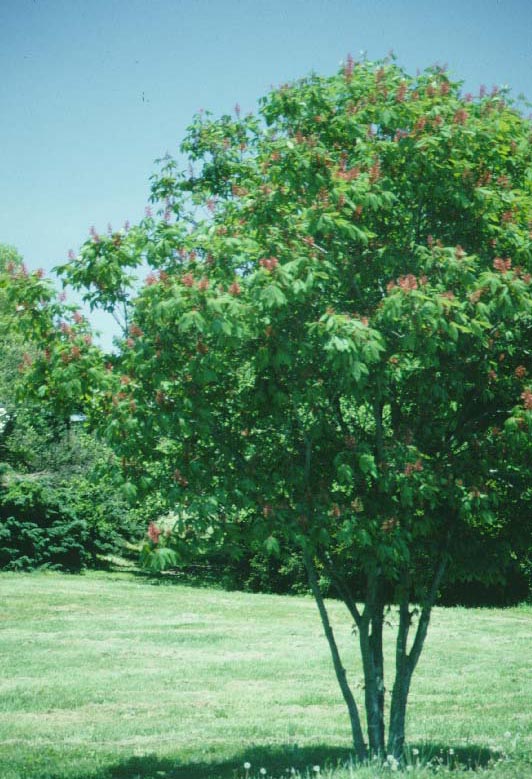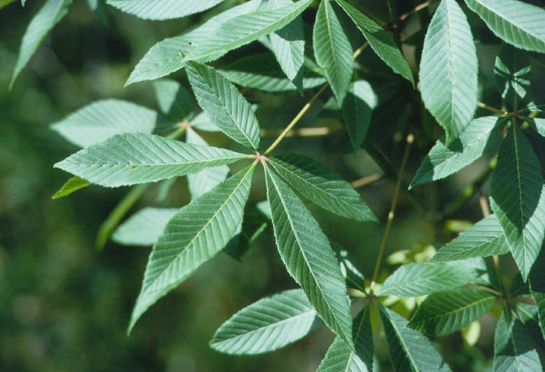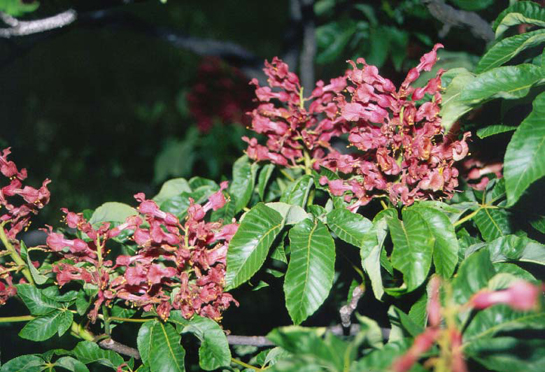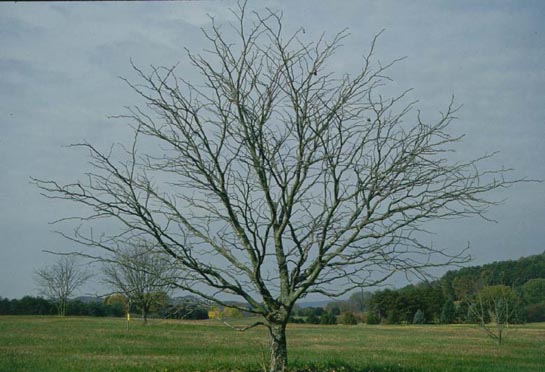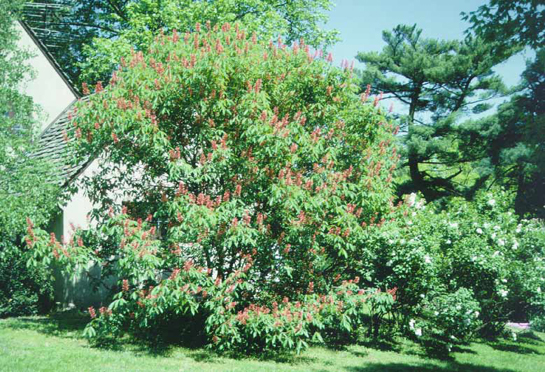Home > Tree selection > Uncommon trees zone 8-9 > Aesculus pavia
Aesculus pavia, Red Buckeye
The Red Buckeye was chosen as a 1995 Gold Medal Plant by the Pennsylvania Horticultural Society for being a plant of exceptional merit, but underused in landscaping. Red Buckeye will flower well in rather dense shade but takes on its best form when grown in full sun with some afternoon shade on moist, well-drained soil. Plants in flower attract hummingbirds. It is native along moist stream banks so it is not very drought-tolerant.
Trees occur naturally throughout northern Florida south to Seminole County.
There are many, small-diameter branches with an occasional upright, aggressive one growing as large as the trunk. Main branches begin forming low on the trunk and remain there when grown in the full sun.
Be sure to clear all turf away from beneath the branches to reduce competition with turf. Train the trunks and branches so they will not touch each other. Eliminate or remove some secondary branches on main branches with included bark or those which are likely to develop it as soon as possible. This reduces the likelihood of one splitting from the tree later when it has grown to become an important part of the landscape. Locate the tree properly, taking into account the ultimate size since the tree looks best if it is not pruned to control size. The tree can enhance any landscape with its delightful spring flush of foliage and flower display. It can be the centerpiece of your landscape if properly located.
Wood is considered diffuse porous meaning that there is little difference in size of pores between spring and summer wood. Members of the Aesculus genus are considered poor compartmentalizers of decay. This means decay can develop and spread quickly following mechanical injury from construction activities near the tree, vandalism, or improper pruning cuts.
Plants
serve as butterfly nectar sources. Pollen can cause significant allergy
problems for some people.

